CASE STUDY
Tinnitus Assessment Device
We have designed the prototype of an innovative tinnitus assessment device to enable the client to conduct clinical studies.
- Projects
- Tinnitus Assessment Device
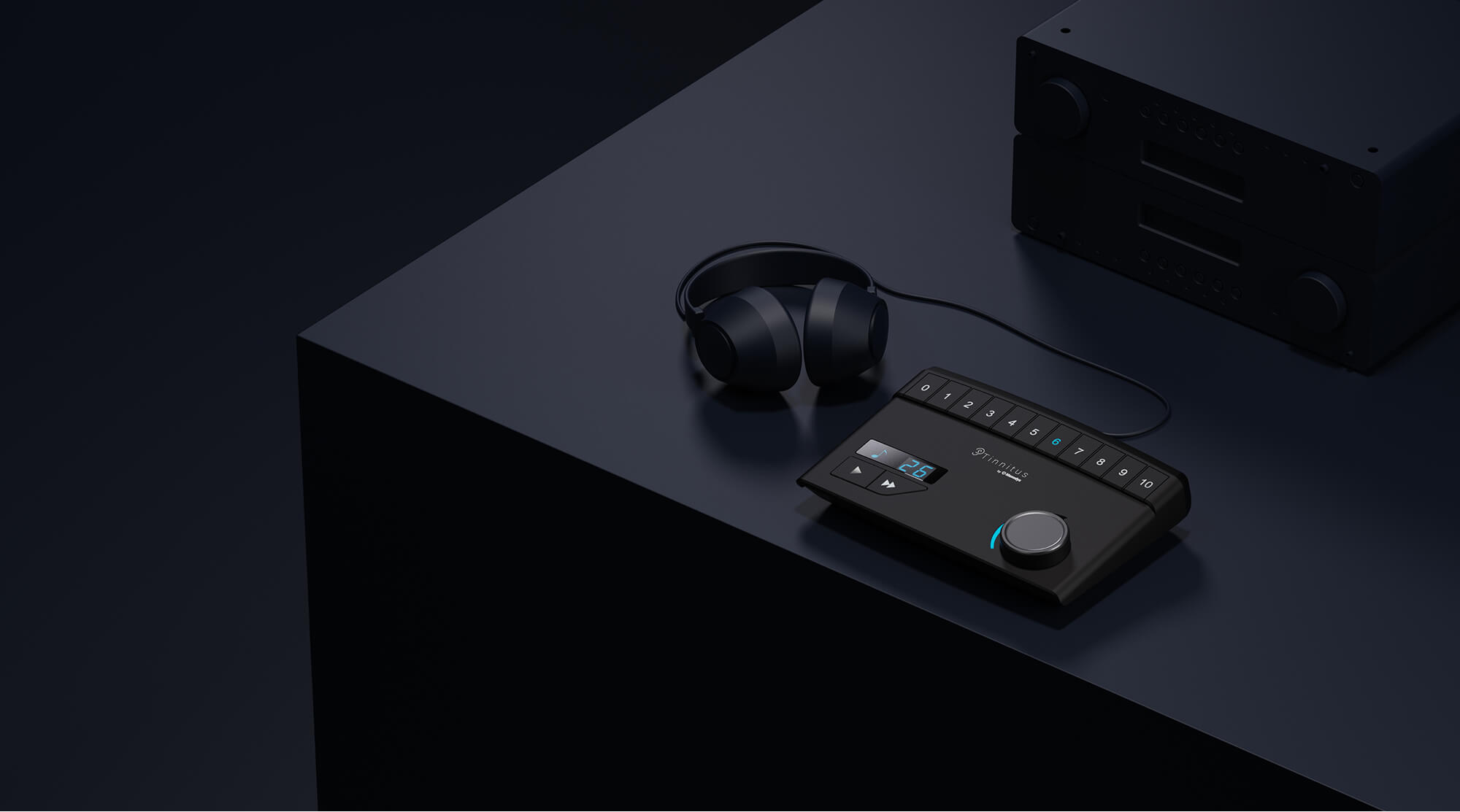
Design of a Device for Assessing Tinnitus Frequency and Intensity
Expertise
Industrial Design, UX Design, Mechanical Design, Embedded Software Development, Electronic Engineering
ABOUT THE PROJECT
Rapid, Objective Analysis of Tinnitus
The product was co-created by a researcher from the Université de Montréal and an audiologist. They approached CLEIO to develop a prototype for a device capable of objectively analyzing the frequency and intensity of tinnitus, with the goal of conducting clinical studies.
The embedded software enables assessment of the patient’s tinnitus frequency and intensity in less than 10 minutes. To do this, an algorithm plays a series of randomly selected sounds, which the patient compares to their own perception of their tinnitus on a scale from 0 to 10. This evaluation then enables the audiologist or audioprosthetist to precisely define the most appropriate symptom alleviation for the patient.
How CLEIO Reimagined the User Experience of an Innovative Device While Meeting Clinical Needs
As the device was intended to be handled directly by the patient, it needed to be easy to use for a wide range of users, while also being comfortable and robust.
By adopting a user-centered design approach, our team came up with a solution that was radically different from the one initially envisioned by the client, and far exceeded their expectations.
Putting the Solution in Users' Hands
To identify and evaluate interactions between the user and the device, we conducted tests using cardboard mock-ups and a usage scenario.
Our designers focused on the cognitive ergonomics of the solution, that is, evaluating the mental functions engaged by the user (perception, memory, processing) when interacting with the device.
This allowed them to explore several interface options for data entry (pressing a button, selecting a scale, moving a cursor or turning a wheel) to determine which methods were best suited to the required actions (playing a sound, moving on to the next sound, evaluating a sound or adjusting the volume).
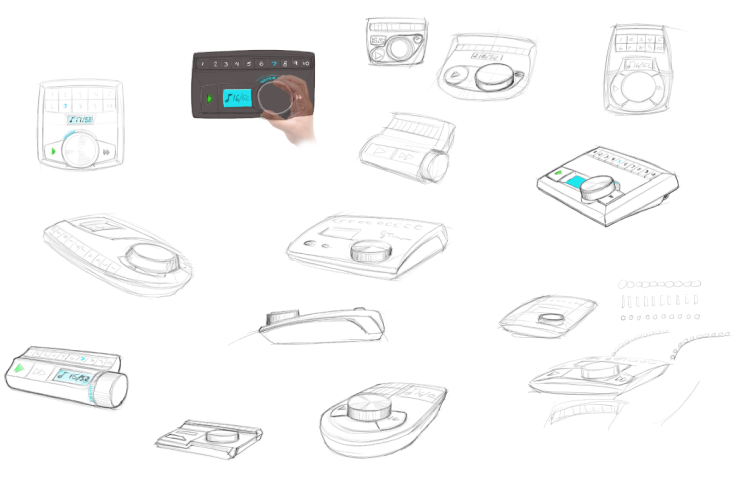
Prioritizing Simplicity and Ergonomics
The device is intended for use in a dark environment, with a limited space, and by elderly users. These observations led us to propose a simple, ergonomic solution adapted to these constraints.
After exploring several configurations, our designers chose an analog, stand-alone device with no display, which offers a number of advantages: minimal space requirements, centralized information, and clear controls.
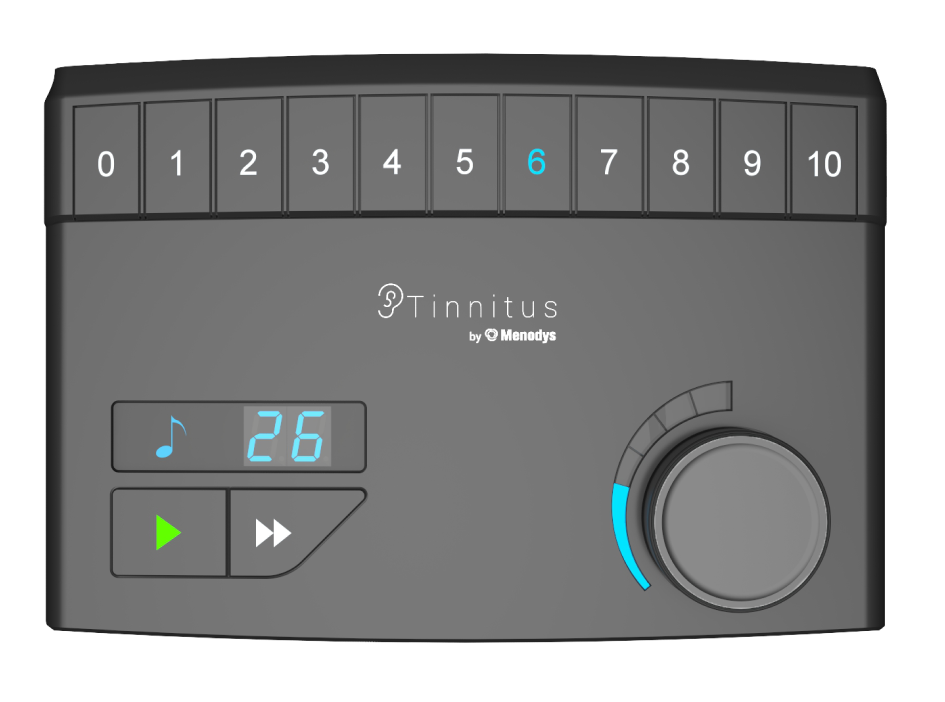
A Sleek, Modern Look
To shape the device’s aesthetic, we drew inspiration from the high-tech world, incorporating smooth curves to enhance the impression of comfort.
We also designed the product’s logo and visual identity, defining a deliberately sober and sleek color palette and typography.
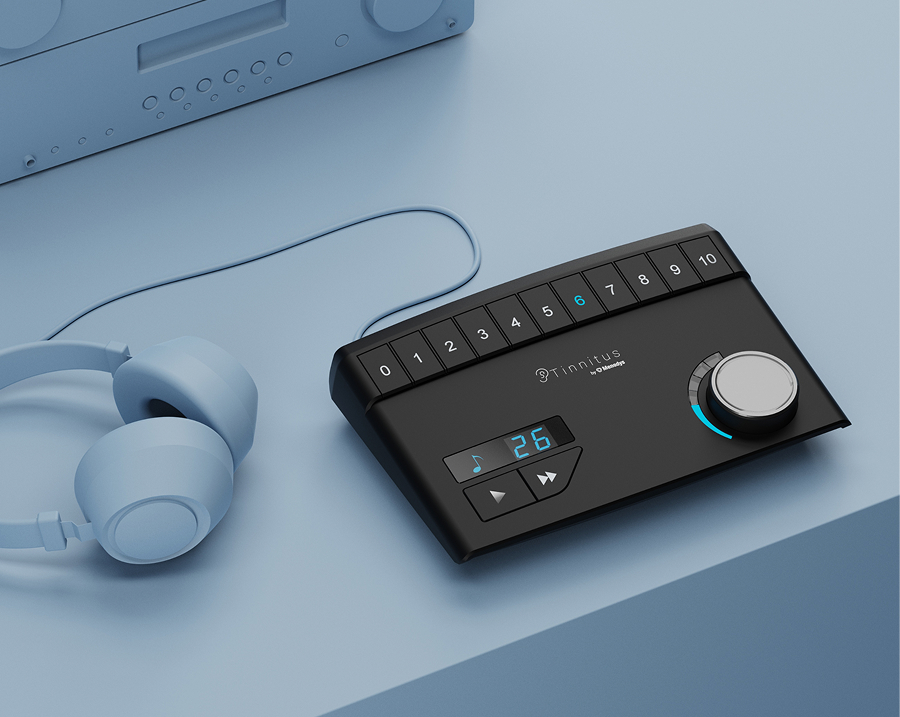
High-Fidelity Sound Restitution
Our electronic engineers integrated an amplifier capable of playing sounds through headphones with the highest possible fidelity, ensuring accurate assessment by the patient.
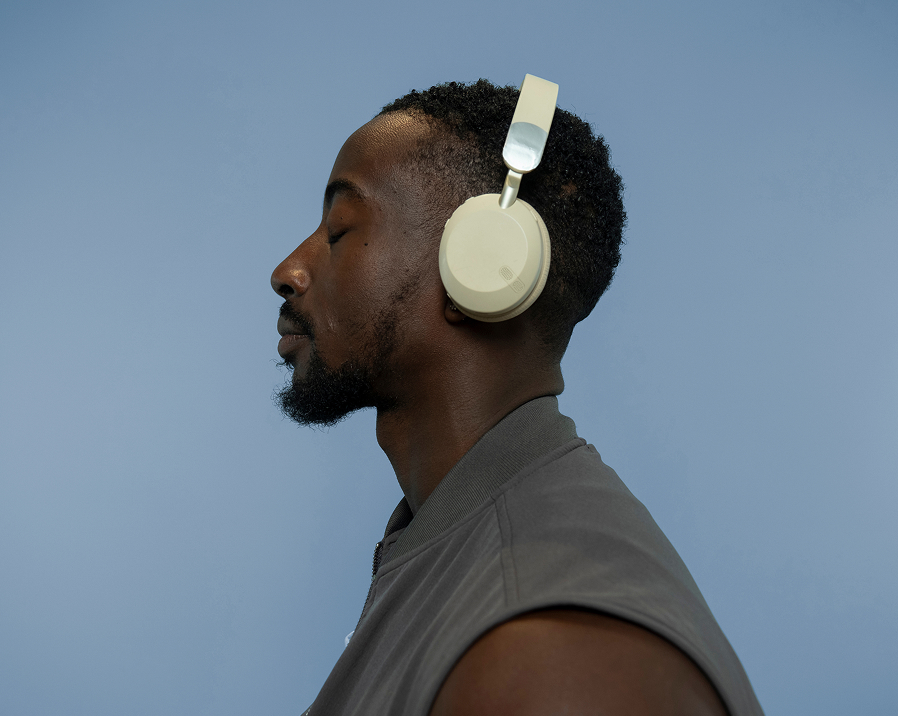
Haptic Precision and Intuitive Control
The device emphasizes haptic sensations: we wanted the user to fully experience the feel of the object in his hands.
While focusing primarily on the sounds they are hearing, they must be able to operate the controls with ease and precision, particularly the volume control.
A Prototype Ready for Clinical Trials
By the end of prototype development, the client had in hand a device ready for clinical trials.
Today, this innovative solution for faster and more accurate tinnitus assessment has been clinically validated and is available for licensing or acquisition.
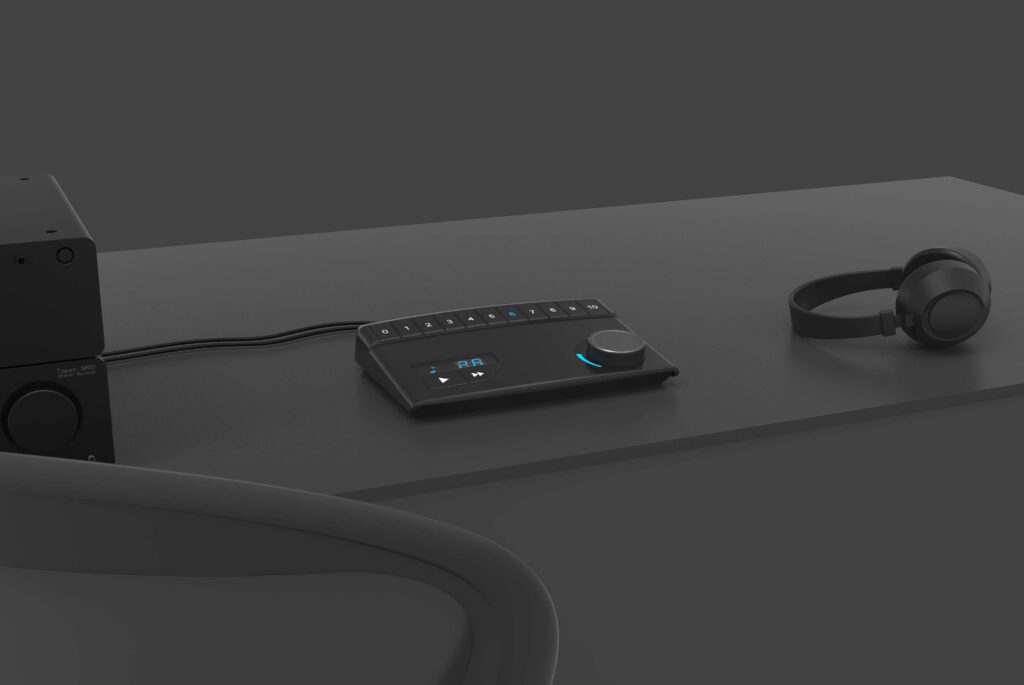

Want Your Innovative Ideas to Create a Positive Impact?
Our experts always got your back.